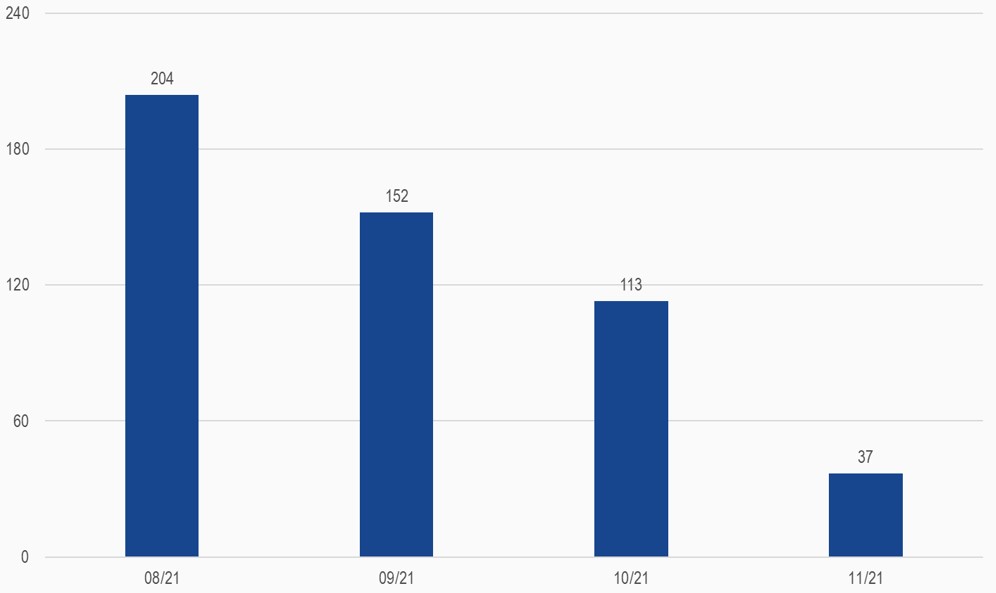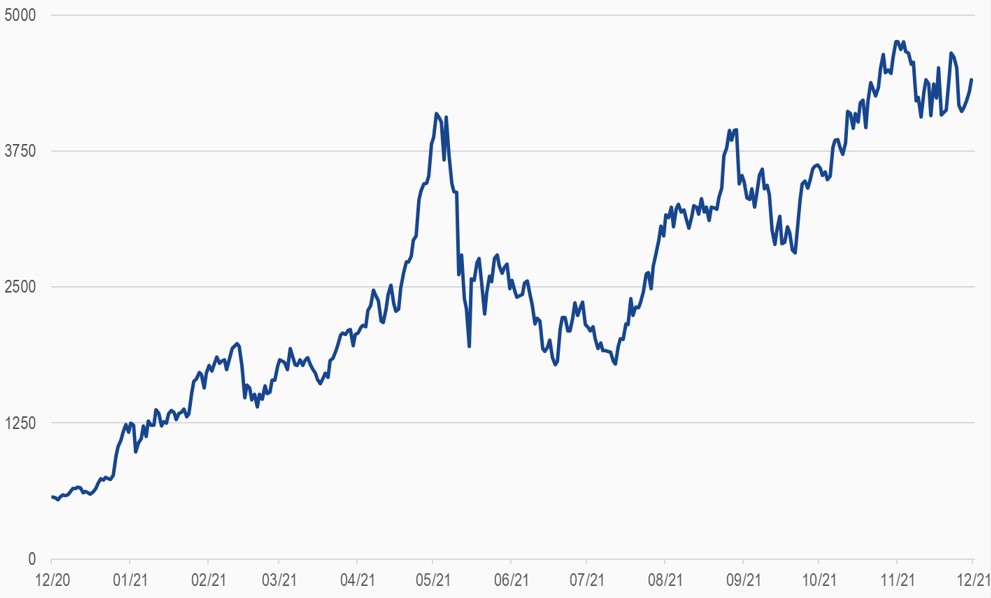The narrative for Ethereum remains strong. It’s the go-to smart contract platform. Users are clearly willing to pay fees on the network for trading, NFT’s and transferring assets. This high demand comes with high fees though. While smaller users are priced out, institutions are willing to pay the high gas price in order to have faster settlement or doing large transactions on a more secure network. While Layer2 scaling is an important topic for the development for Ethereum, the current demand for this layer-1 platform has a direct effect on the supply as well.
The latest change of Ethereum’s transaction fee system – EIP-1559 leads to a fee burn of the base fee. At the moment, the fee burns are so high, that the net issuance of ETH continues to decline.
Ether Net Issuance (in thousands of ETH)
31/8/2021-30/11/2021

Source: Watch The Burn, messari.io. Data as of 3 December 2021.
So reduced supply and increased demand are the perfect prerequisite for an ongoing rally. While the crypto market is in a correction phase, Ethereum is doing incredibly well (10.43% down from All-Time-High), especially when you compare that to the old market leader Bitcoin (26.46% down from All-Time-High). If this transaction demand continuous, Ethereum could experience negative net issuance in December. These ongoing demand supply dynamics should support the Ethereum price even further.
MVIS CryptoCompare Ethereum Benchmark Rate Index
09/12/2020-09/12/2021

Source: MV Index Solutions. Data as of 9 December 2021.
Get the latest news & insights from MarketVector
Get the newsletterRelated:
About the Author:
Martin Leinweber is an expert in fundamental and quantitative trading strategies. He sees cryptoassets as a fundamental building block for investors to achieve their return targets in a low interest rate environment. He works as a Digital Asset Product Strategist at MV Index Solutions providing thought leadership in an emerging asset class. His role encompasses product development, research and the communication with the client base of MVIS. Prior to joining MVIS, he worked as a portfolio manager for equities, fixed income and alternative investments for almost two decades. He was responsible for the management of active funds for institutional investors such as insurance companies, pension funds and sovereign wealth funds at the leading German quantitative asset manager Quoniam. Previously, he held various positions at one of Germany's largest asset managers, MEAG, the asset manager of Munich Re and ERGO. Among other things, he contributed his expertise and international experience to the establishment of a joint venture with the largest Chinese insurance company PICC in Shanghai and Bejing. Martin Leinweber is co-author of „Asset-Allokation mit Kryptoassets. Das Handbuch“ (Wiley Finance, 2021). It’s the first handbook about integrating digital assets into traditional portfolios. He has a Master in Economics from the University of Hohenheim and is a CFA Charterholder.
The article above is an opinion of the author and does not necessarily reflect the opinion of MV Index Solutions or its affiliates.




